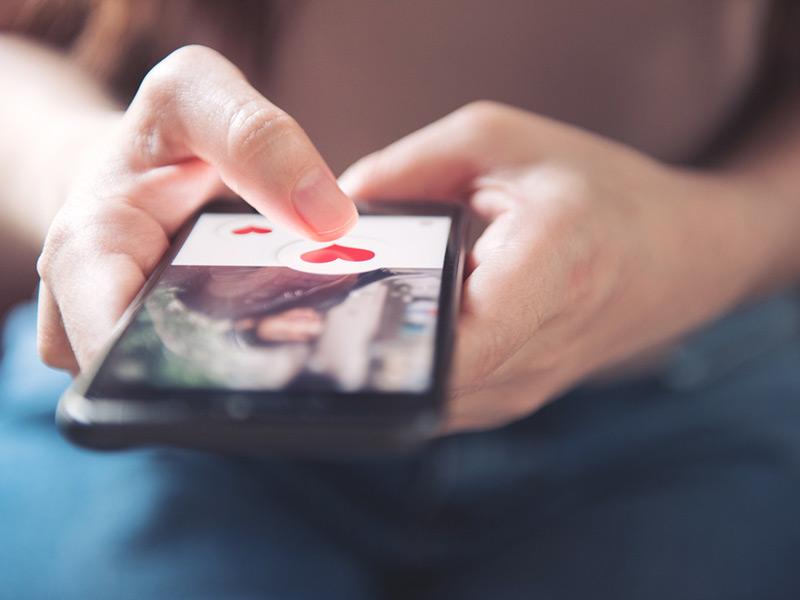Study: Vanishing photos make matches multiply on dating apps

Because of catfishing and other dating scams, privacy is essential on online dating sites, even more so than other places online. However, these privacy concerns can make people reticent to share the very personal information that could help them make a connection with someone.
A new Tulane University study finds that sharing ephemeral photos, which vanish after being seen, can increase the number of matches on a dating app. The study was published in Information Systems Research.
Popularized by the app Snapchat, ephemeral sharing is a type of digital design wherein the person receiving information, like a photo, can only view it for a limited amount of time after which it becomes invisible and non-retrievable. Because the information disappears, people tend to be more willing to share personal information because of the higher level of privacy it affords, said lead study author Yumei He, assistant professor of management science at Tulane’s A. B. Freeman School of Business.
“Usually people on dating platforms are strangers, and they have privacy concerns,” said He. Because of the proliferation of things like dating scams, she said “the privacy issue is more substantial on dating platforms. What if my information now gets abused, or I get identified by somebody else, my friends or acquaintances?”
The study, which was conducted using a popular dating app in China, found that enabling people to share in the moment helped them overcome the “communication cold-start problem,” which is a phenomenon where people are loath to share personal information with new people on dating apps. The issue makes it more difficult to have conversations that could lead to a deeper connection.
Because people were more likely to share photos when they were ephemeral, users ended up with more matches and had more conversations once they matched.
Before starting the study, He’s team wanted to check whether the ephemeral sharing would increase the amount of unwanted photos, like images with sexual or other inappropriate content. Her team found no significant difference in the ratio of toxic photos between ephemeral and normal sharing. “This is critical, because that means that feature is creating some benefit without compromising the courtesy for sending a photo,” said He.
This is likely due to an important difference between sharing ephemeral photos on social media, where users likely already know the people they are sharing information with, and on dating sites, where users are strangers. On dating apps, He said, “people still want to preserve a good self-image or present themselves in order to get a quality match.”
This means that, even with ephemeral sharing, people don’t tend to be as emotional or disinhibited on dating sites as they are amongst people they already know on social media.
“It is because people share more photos that are ephemeral, instead of a content change, that leads to more matches or the receiver’s conversation,” said He.
This research was done in conjunction with Xingchen Xu from the University of Washington, Ni Huang and Kevin Hong from the University of Miami, and De Liu from the University of Minnesota.
- Molly McCrory mmccrory@tulane.edu
This story originally appeared in Tulane Today
Interested in advancing your education and/or career? Learn more about Freeman’s wide range of graduate and undergraduate programs. Find the right program for you.
Recommended Reading
- Business Analytics vs. Finance: Which Master’s Degree Is Right for You?
- Claire Senot: Leveraging the Power of Data
- What Can You Do With a Business Analytics Degree?
- Meet the MBA Class of ’26: Matt Gelb
- Tulane Faculty Member Uses Data Analytic Skills to Improve Coordination of Care, Classroom Experience
- Ukrainian scholar to discuss economic impacts of war
Other Related Articles
- Freeman launches new Business Analytics and AI Certificate
- Research Notes: Claire Senot
- WGNO-TV: Cabbage prices up 8% for St. Patrick's Day
- Fox News: High egg prices putting a pinch on Louisiana bakeries ahead of Mardi Gras
- Research Notes: Hongseok Jang
- MANA Colloquium showcases ‘Analytics in Action’
- The National Desk: AI will likely boost data center power demand over 150% by 2030
- Research shows how utilities can avoid solar-powered 'death spiral'
